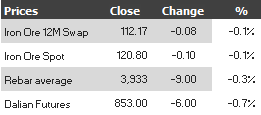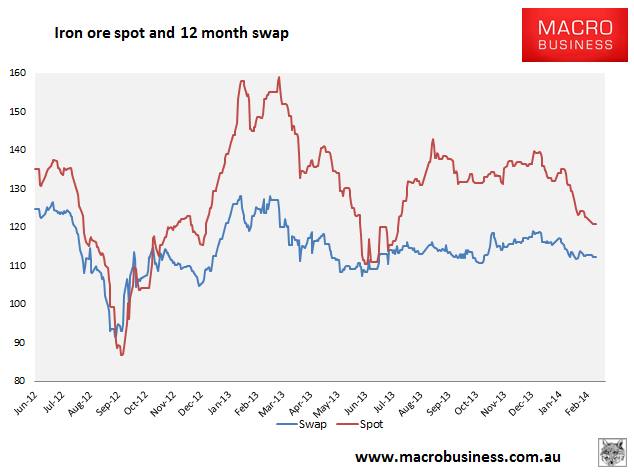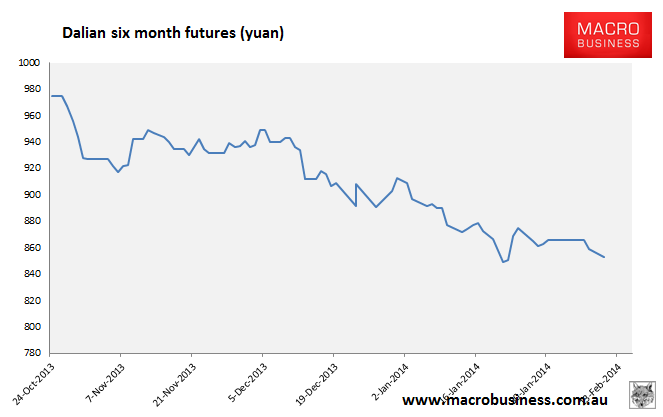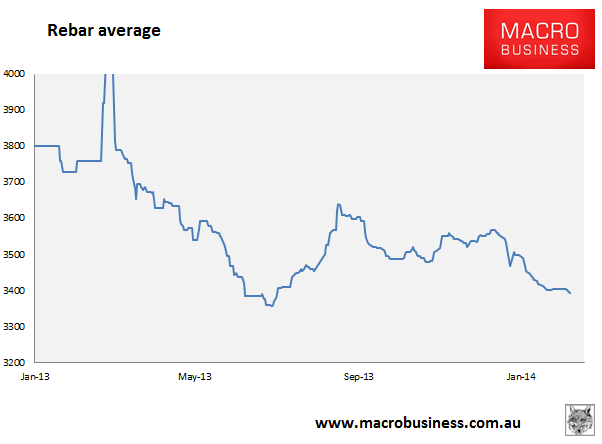Find below the iron ore price tables for February 10, 2013:




First up, no cyclone appears imminent in the Pilbara:
Recent satellite and radar imagery shows tropical system 09U is still well organized. However, it is still well inland, to the south of Broome, and should remain inland.
Flood Advices and Severe Weather Warnings continue for parts of the Kimberley and Pilbara. Please refer to the latest advices for further details.
Likelihood of a tropical cyclone in the Western Region on:
Tuesday Very Low
Wednesday Very Low
Thursday Very Low
That will remove near term support. Of the wall-to-wall mild red on markets the most concerning remains rebar, the further it falls the more likely mills will destock iron ore inventories.
Some..err…”bulls” are now running for cover. From Barry Fitzgerald:
NO one really knows where iron ore prices are headed until the masses in China get back to work after the countrys prolonged new year celebrations.But with the surge in supply about to hit from expansions in Australia and elsewhere, there are now more pundits calling iron ore lower from its current $US120 a tonne than there are calling it higher.
Given it is simply un-Australian not to have some iron ore exposure in the portfolio, it could well be time for investors to at least move their exposure to a more defensive position in the biggest of our commodity exports.
It’s unAustralian to not lose money?

